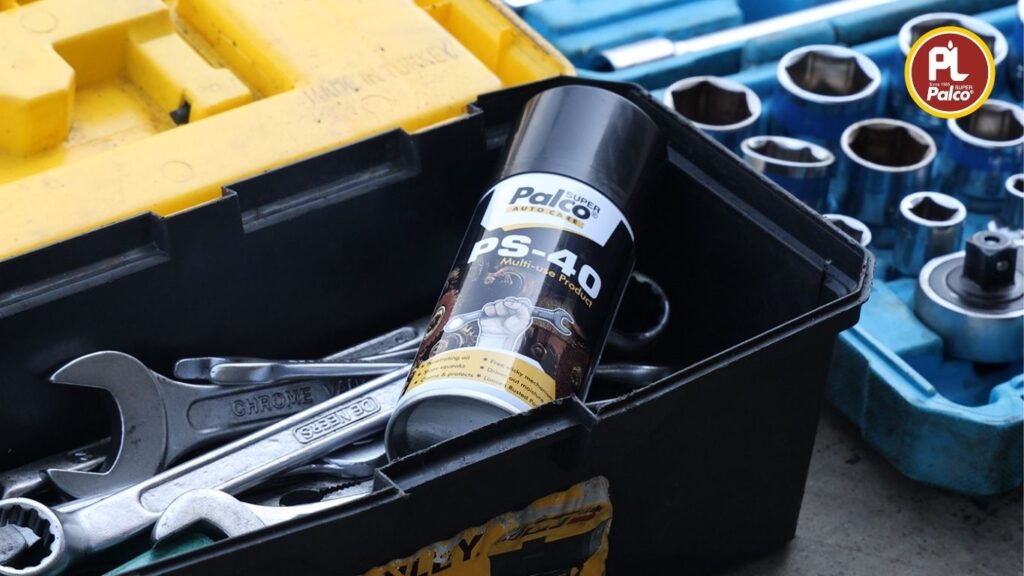
There are moments when machinery stalls, hinges squeak, bolts freeze, and metal parts simply refuse to move. These issues look small but can disrupt work, delay projects, and cause unnecessary frustration. This is where penetrating oil proves its value. It is one of the most underestimated tools in maintenance, capable of reviving old equipment and restoring motion with surprising ease.
Among the widely trusted solutions, PS 40 stands out as a multipurpose penetrating oil designed to loosen, clean, protect, and restore. What makes it remarkable is how many problems it can solve with just a few sprays.
What Makes These Oils Special?
Penetrating oils are not like regular lubricants. They are engineered with a thin, low-viscosity formula that allows them to slip into tight spaces where thicker oils cannot reach. This is important because corrosion and grime often settle deep between metal surfaces, creating a bond that ordinary lubricants fail to break.
PS 40 is built for this exact job.
It combines fast-acting solvents, corrosion inhibitors, and cleaning agents that dissolve rust, reduce friction, and restore smooth movement. What makes it especially unique is its ability to remove stains, break down heavy grease, and lift adhesives without damaging paint, plastic trims, or gaskets.
This combination of deep penetration, rust removal, moisture displacement, and surface safety makes penetrating oils indispensable across homes, workshops, vehicles, and industrial operations.
How It Works
Penetrating oils follow a clear and effective process. Understanding how they work helps you use them more confidently and get maximum performance.
1. Deep Penetration
The thin formula spreads quickly and moves into microscopic gaps between threads, hinges, joints, and fasteners. This is the first step in breaking the bond created by rust or dirt.
2. Rust Dissolution
Rust forms a tight grip over metal surfaces. The chemicals in PS 40 soften this layer and break it down, freeing parts that were stuck firmly in place.
3. Moisture Displacement
Water trapped inside metal components accelerates corrosion. Penetrating oil pushes moisture away from the surface, helping prevent future rust formation.
4. Cleaning Action
Along with freeing stuck parts, PS 40 dissolves grease, grime, and adhesive residues. This makes the treated surface cleaner and easier to work with.
5. Protective Layer
Once the job is done, the oil leaves behind a thin protective film. This reduces friction, offers mild lubrication, and slows down further corrosion.
This step-by-step process is what makes penetrating oils so effective for maintenance, repair, and restoration work.
Surprising Uses You Might Not Know
Penetrating oil is often associated with freeing rusted bolts, but that’s only one of its many functions. PS 40 has a much wider range of applications.
Restoring Old Tools and Hardware
Tools that haven’t been used for years often grow stiff or rusty. A generous application loosens them, cleans the metal surface, and brings them back to serviceable condition.
Removing Rust Safely
PS 40 dissolves rust on cast iron, chrome, steel, and other metals without scratching or harming the finish. This makes it great for automotive parts, garden tools, and workshop items.
Removing Adhesives and Sticky Labels
Stubborn stickers, packaging residue, and gummy tape marks come off easily after a short soak. PS 40 softens adhesive quickly, making cleanup effortless.
Fixing Squeaks and Stiff Movements
Door hinges, sliding windows, locks, and gate mechanisms operate smoothly again with a small amount of penetrating oil.
Cleaning Grease and Grime
Heavy grease buildup on engines, machines, or metal parts loosens and wipes away more easily after treatment.
These unexpected uses show how versatile and practical penetrating oils are for daily maintenance.
General Misconceptions About Penetrating Oil
Despite their usefulness, penetrating oils are often misunderstood. Clearing up these misconceptions helps users get the best results.
“It’s the same as a regular lubricant.”
Penetrating oil is not a long-term lubricant. It cleans, loosens, and protects, but it does not replace grease or heavy-duty oils needed for continuous movement.
“It should work instantly.”
Light rust may loosen quickly, but heavier corrosion often requires soaking time. Patience allows the oil to break down buildup more effectively.
“More oil gives better results.”
Penetration depends on time and technique, not quantity. A moderate amount works well as long as you let it soak.
“Penetrating oil damages painted surfaces.”
Products like PS 40 are designed to be safe on paint, gaskets, trims, and most surrounding materials when used properly.
Safety and Storage Tips
Penetrating oils are powerful maintenance tools, but they must be handled responsibly to ensure safety and peak performance.
Use in a Ventilated Area
The solvents can produce fumes. Fresh air reduces inhalation risks.
Keep Away from Heat and Fire
Penetrating oils are extremely flammable. Store away from sparks, flames, and temperatures above 50°C.
Avoid Contact with Skin and Eyes
Wear gloves when needed. Wash hands after use and avoid spraying near your face.
Store Upright in a Cool, Dry Place
A tightly sealed, upright container prevents leakage and maintains product quality.
Keep Out of Children’s Reach
It is a technical product that should only be handled by adults.
A Small Product That Solves Big Problems
Penetrating oil may not look impressive at first, but its performance speaks for itself. PS 40 proves how powerful this category of products can be. It loosens rusted parts, cleans metal surfaces, removes adhesives, displaces moisture, and protects metal, all with just a few sprays.
Whether you are maintaining machinery, repairing something at home, restoring old tools, or working on vehicles, having a reliable penetrating oil on hand often turns a difficult job into a simple one. It is truly a little magic in your hands, ready to make everything work again when you need it most.
